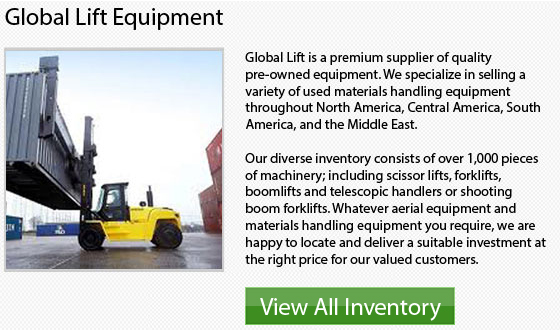
High Impact Lift Truck Safety
OSHA or Occupational Safety and Health Administration statistics have shown that nearly all of the accidents caused by forklifts also happen from the failure of individuals following proper safety features. A person from the operators, pedestrians and co-workers has to be aware and make certain these situations are avoided. Fortunately, there are many ways to solve these issues.
Inspection
Even if a high impact forklift is a tough and durable machinery, capable of withstanding a few knocks during its shift, it is absolutely not invincible by any means. At the beginning of every shift, the operator needs to inspect the equipment's cleanliness and usability. If anything out of the ordinary must occur, the driver must instantly alert their superior. Inspections everyday must be done at the start or end of each and every shift so as to make certain that the forklift is in proper working condition.
Training
Lift truck training is a necessary and imperative measure that needs to be undertaken for the safety of the operator and their fellow co-employees. Training is offered in order to teach the forklift employees how to properly check the equipment, how to respond to emergency situations and also how to deal with stability issues. Lots of businesses provide forklift training. Upon successful completion of the program, a license and certification would be offered as proof of passing the training.
Exhaustion
The lift truck is a large industrial equipment, it should never be utilized by drivers who may be unfocused or really exhausted. Accidents occurring from fatigue are unfortunately a common experience. These mistakes can be avoided easily if the worker just admits that they are not capable of driving the forklift if they are feeling that way.
During the 1990's, Kalmar made the largest forklifts on the market nowadays. These machines were rated with an impressive 90-tonne capacity. Kalmar actually earned a place in the Guinness Book of Records. Nowadays, there are a variety of lift truck companies building and engineering large forklifts.
Besides Kalmar in Sweden, several of the large manufactures include: Taylor and Hyster within the United States, Fantuzzi within Italy, Svetruck in Sweden, Paus from Germany, Linde from Germany, SMV Konecranes in Sweden, Hoist, Paling, Rigger Xtreme and Lowry from Ohio, Toyota from Japan, Royal Tractor in the United States, Omega, Australia and Omega Lift within Ohio. Other large companies include: Komatsu, Mitsubishi and TCM in Japan, Hubtex from Germany, ZV from Italy, Meclift within Finland, Dalian Forklift in China and Daewoo within Korea.